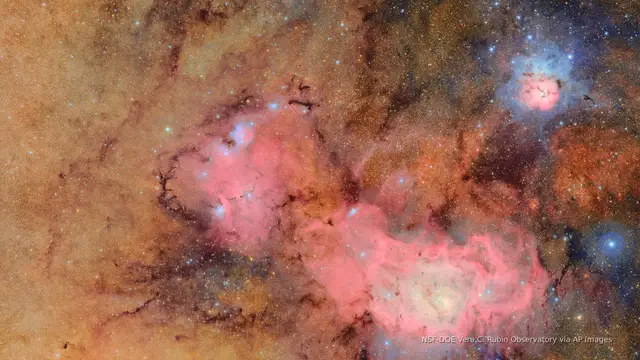The world’s largest digital camera and most powerful telescope released the first images it has captured in the best images yet of the universe.
Show More Show Less View Video Transcript
0:00
The first images from the world's most powerful telescope and captured by the largest digital camera ever built were released Monday
0:07
Take a look. These are images of faraway galaxies, cosmic dust clouds and asteroids tearing through space
0:16
Scientists say these are among the greatest images ever seen by the human eye and more than a million more are yet to come
0:22
This is one of the world's biggest telescopes, twinned with the world's biggest camera, about to embark on a 10 year mission to see everything that goes whiz, flash, bang in the night, creating a movie of everything that moves
0:41
And at the same time, building up the deepest, widest image of the cosmos that we've ever made
0:46
Now, to make a camera that big, this thing is absolutely huge
0:50
It's about the size of a small car. The lens in it is also the world's biggest lens, has a Guinness World Book record
1:00
It's about the, if you put it on its side, the lens is about the height of an average woman
1:06
So this thing is absolutely huge. It's part of a decade-long effort to survey the universe at the Vera C. Rubin Observatory in Chile
1:15
Astronomers promise it will be a history-making period of space exploration and discovery
1:20
as the telescope embarks on its mission to collect incredible images of the universe in all its glory
1:25
In just 10 hours, the observatory discovered more than 2,100 previously undetected asteroids
1:32
including seven relatively close to Earth. Don't worry. Astronomers say those ones are not a current threat to our planet
1:39
More images are expected to show an estimated 90 new near asteroids which would be double the number currently known by scientists One of the first top science priorities for this mission is to map out all of the asteroids in our universe to map their path their trajectory
1:58
And hopefully, fingers crossed, we won't find any on a direct collision course
2:03
But if we do, that's when we start mobilizing the Planetary Defense Force, which is already in play
2:08
You know, we've already managed to deflect an asteroid out in space. Positioned in the Andes, the U.S.-led observatory is fitted with the most high-tech telescope ever created and world's largest digital camera
2:20
This telescope is being sighted in Chile, one of the best observing places in the world
2:25
So we don't have to worry about the Scottish clouds that I sit under here in Scotland
2:30
And it's very dry, perfect conditions in which to make these regular observations on repeat
2:40
night after night after night, to see where things are changing absolutely everywhere across the night sky
2:45
And you can't do that from these beautiful telescopes that we have up in space
2:49
The telescope and camera will survey the entire southern sky. And to do that, you need a really, really big telescope, which is exactly what they've built
2:57
plus a really wide camera that allows us to map the entire visible sky every three to four days
3:09
So every three to four days, we sort of look across the sky and then we go back and we do it again and again and again
3:15
Astronomers also expect to learn more about asteroids, comets, exploding stars, new planets
3:21
the mystery behind dark matter and energy and more. The effort will include trillions of measurements of billions of space objects, some far beyond our galaxy
3:30
The observatory will compile roughly 1.5 million images featuring some 10 billion stars and galaxies over 10 years
3:38
For more on this story, download the Shader News app or visit san.com
#news
#News
#Astronomy
#Scientific Equipment



